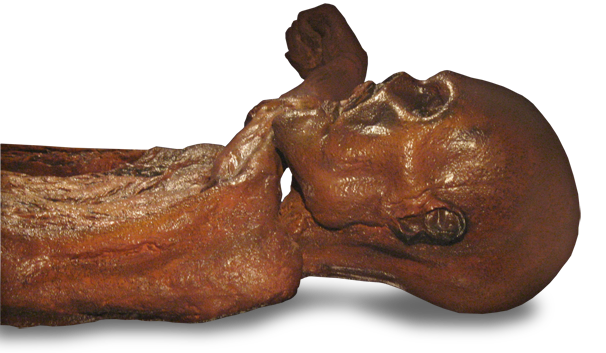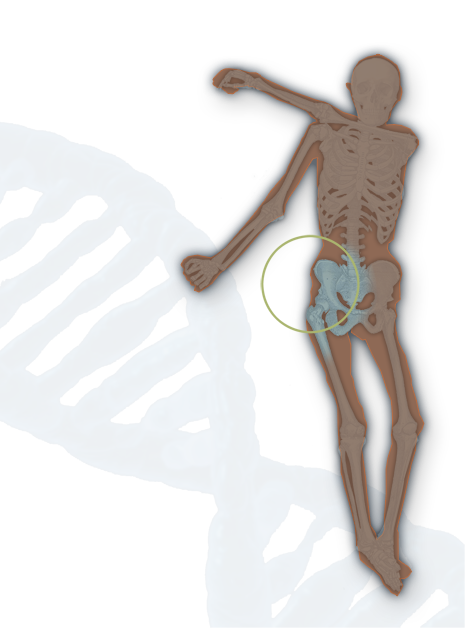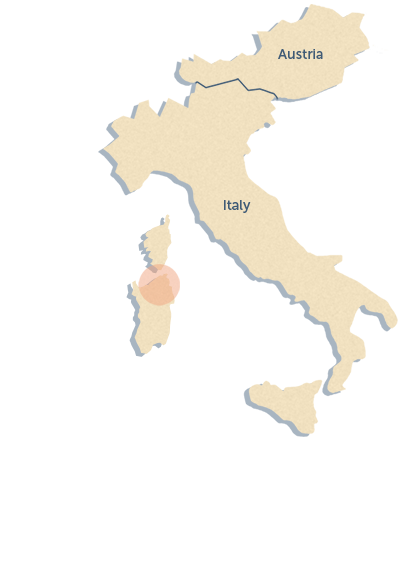Homo sapiens interbreeds with Neanderthals in the Middle East. Many people living today have traces of Neanderthal DNA in their genomes.


The shockingly well-preserved, frozen mummy of the Tyrolean Iceman, “Ötzi,” was discovered in 1991 in the Italian Alps.

Genetic analysis of the 5,300-year-old Copper Age man began in 1994, recovering partial mitochondrial sequences, and ended in 2012 with whole genome sequencing of a sample from his hip bone.
Instructions: Discover details about Ötzi by selecting the info dots. 
Researchers looking at unusual genetic markers on the Iceman's male sex chromosome (Chromosome Y) found at least 19 genetic relatives of Ötzi in Austria's Tyrol region, matching samples of 3,700 anonymous blood donors.
Thirty different types of pollen were found in Ötzi’s stomach leading scientists to decide that he died in the spring or early summer, and allowing researchers to trace his final movements through different mountain elevations.
A number of studies have been done on the contents of Ötzi’s intestines showing up that his last meal was red deer meat and possibly cereal grains.
Whole genome sequencing in 2012 revealed Ötzi probably had brown eyes, Type O blood, and couldn't digest milk (lactose intolerance trait). He was genetically at risk for coronary heart disease and suffered from Lyme disease.
DNA found in hair shafts from Ötzi’s clothes demonstrated that sheep belonging to this particular population group were already domesticated in the Alps more than 5,000 years ago.

Ötzi’s genetic profile most closely resembles modern-day Sardinians. Sardinians hail from a western Mediterranean island, and an autonomous region of Italy known as Sardinia. Scientists believe that most of the Neolithic farmers in Central Europe would have had similar DNA.
Close Ötzi the Iceman
Domestic plants and animals are raised for food, work, clothing, medicine, transportation, as pets and for many other uses. Domesticated species are not wild and can look very different from their wild ancestors. That is because humans breed animals and plants to promote certain traits.
The first plant to be domesticated was probably barley in Mesopotamia, about 10,000 years ago. Other plants that were cultivated by early civilizations included rice (in Asia) and potatoes (in South America).
About the same time they domesticated plants, people in Mesopotamia began to tame goats and sheep.
Choose a crop or animal above to start the game!
Congratulations!
Continue to ConclusionDomestication is the process of cultivating wild plants and taming wild animals for human use.
Instructions:
Use the ˄ ˅ arrows to match the WHERE, and the WHEN with the chosen WHAT. Then click GO to check your answers.
Sorry, please try again.
Go!Early domestication involved changes to many genes, each with a small effect in the traits of rice. This resulted in two important features found in rice today: a reduced tendency of the rice grains to fall off the plant (shattering); and the ability to stay alive during harsh environmental conditions or between plantings (dormancy).
Instructions:
Use the ˄ ˅ arrows to match the WHERE, and the WHEN with the chosen WHAT. Then click GO to check your answers.
Sorry, Please Try Again.
Go!Early stages of domestication involved major changes in a small number of genes that produced important physical changes to the plant including a stalk-like appearance (tb1 gene) and changes to the kernel shape and covering (tga1 gene).
Instructions:
Use the ˄ ˅ arrows to match the WHERE, and the WHEN with the chosen WHAT. Then click GO to check your answers.
Sorry, Please Try Again.
Go!Modern potatoes mainly come from two different species of South American potatoes that were originally very bitter tasting and looked like gnarled fingers.
Instructions:
Use the ˄ ˅ arrows to match the WHERE, and the WHEN with the chosen WHAT. Then click GO to check your answers.
Sorry, Please Try Again.
Go!Domestication of livestock involved the selection of variants in genes controlling muscle production and organization, coat color, and behavioral traits.
Check Out These Fun Facts!
On average an ear of corn has 800 kernels in 16 rows.
Goats were the first animal to be domesticated, according to many historians.
Potato plants are usually pollinated by insects such as bumblebees.
In the year 2003, the world produced about 589 million tons of rice.
“In and Beyond Africa” shows how humans have developed and migrated over the last 200,000 years, but what does the future hold for human beings?
The Deep Future eLearning game encourages you to think – and share your ideas – about the near and distant future. After entering your responses, use the bar graphs or word clouds to compare your ideas with those submitted by others.
Choose a timeline to explore
How will human life and medicine change in the next 10 years? 100 years? 1000 years? Deep Future has given you a chance to consider these questions and share your ideas.
Are your predictions correct? Keep learning about technology, medicine, genetic engineering, and evolution to encounter new ideas every day. What does the future hold? Only time will tell!
Close or return to Menu and choose a new time period